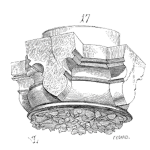
Suppose installed base or cohorts in successive periods have different reliabilities due to nonstationarity? What does that do to forecasts, estimates, reliability predictions, diagnostics, spares stock levels, maintenance plans, etc.? Assuming stationarity is equivalent to assuming all installed base, cohorts, or ships have the same reliability functions. At what cost? Assuming a constant failure rate is equivalent to assuming everything has exponentially distributed time to failure or constant failure rate. At what cost?









 Ask a question or send along a comment.
Please login to view and use the contact form.
Ask a question or send along a comment.
Please login to view and use the contact form.